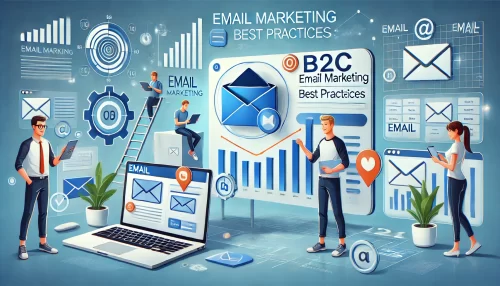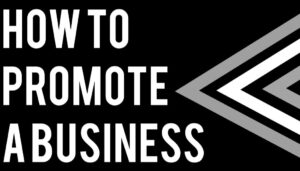Increase your sales and stay ahead of the competition by implementing proven sales strategies and tactics that can help you achieve sales growth and increase revenue.
In this article, we will explore various sales strategies and tactics, including sales conversion, sales funnels, customer acquisition, upselling, cross-selling, sales forecasting, sales analysis, sales metrics, and sales targets.
Sales Strategy: Designing Your Roadmap to Increase Your Sales
A well-designed sales strategy is critical for any business looking to increase its sales. A sales strategy serves as a roadmap that outlines your target market, competitive positioning, value proposition, and sales tactics.
- Market Segmentation and Competitive Analysis – When designing your sales strategy, consider factors such as market segmentation, competitive analysis, and sales channel optimization. Conducting a thorough sales analysis can help you identify areas of opportunity and potential bottlenecks in your sales process, enabling you to make informed decisions that drive sales growth.
- Sales Channel Optimization – Optimizing your sales channels ensures that you reach your target audience effectively and efficiently. This may involve focusing on specific channels, such as online or in-person, or a combination of both.
Sales Tactics: Boost Sales with Targeted Techniques
Effective sales tactics are crucial to improve your sales performance. Sales tactics can include prospecting methods, lead generation, sales presentations, negotiation techniques, and closing strategies.
- Prospecting Methods and Lead Generation – Implementing targeted sales tactics ensures that you engage with potential customers at the right time and in the right way, increasing the likelihood of converting leads into sales. By continuously refining and testing your sales tactics, you can optimize your sales process and drive sales growth.
- Sales Presentations and Negotiation Techniques – Effective sales presentations and negotiation techniques are crucial for persuading potential customers to purchase your products or services. Developing these skills can lead to more successful sales conversions and increased revenue.
Sales Conversion and Sales Funnel: Optimizing the Path to Purchase
The sales funnel is a visual representation of the customer journey, from initial awareness to final purchase. Optimizing your sales funnel is essential to increase your sales conversion rate, as it helps identify areas where customers may be dropping off or experiencing friction.
- Analyzing and Improving the Sales Funnel – To improve your sales funnel, analyze each stage of the customer journey, from lead generation to closing the sale. Identifying and addressing any bottlenecks or pain points in the process can significantly increase your sales conversion rate and revenue.
- Conversion Rate Optimization Strategies – Implement conversion rate optimization strategies, such as A/B testing and user experience improvements, to increase the likelihood of customers completing the purchase process and driving sales growth.
Customer Acquisition, Upselling, and Cross-Selling: Driving Revenue Growth
To increase your sales, focus on customer acquisition strategies such as targeted marketing campaigns, lead generation, and sales outreach. Additionally, upselling and cross-selling to existing customers can significantly boost sales and revenue.
- Effective Customer Acquisition Techniques – By implementing effective customer acquisition strategies, such as content marketing, search engine optimization, and targeted advertising, you can attract and engage potential customers, increasing your chances of generating sales.
- Upselling and Cross-Selling Strategies – Upselling involves offering customers a higher-priced or upgraded version of the product or service they are already purchasing, while cross-selling involves promoting complementary products or services to customers. By implementing effective upselling and cross-selling strategies, you can drive sales growth and stay ahead of the competition.
Sales Forecasting, Sales Analysis, and Sales Metrics: Measuring and Tracking Success
Sales forecasting, analysis, and metrics are essential for monitoring your sales performance and making data-driven decisions to increase your sales. Sales forecasting helps you predict future sales based on historical data, allowing you to plan and allocate resources effectively.
Sales analysis involves evaluating sales data to identify trends, opportunities, and areas of improvement. Sales metrics, such as sales targets, conversion rates, and customer acquisition costs, provide measurable benchmarks to track your progress and adjust your strategy as needed.
- Sales Forecasting Techniques – Utilize various sales forecasting techniques, such as qualitative and quantitative methods, to make accurate predictions about your sales performance. Incorporating both historical data and market trends can lead to more accurate forecasts, helping you plan and allocate resources effectively.
- Sales Analysis and Identifying Opportunities – Regularly conduct sales analysis to evaluate your sales performance and identify areas for improvement. This may include analyzing sales data by product, region, or customer segment to uncover trends and patterns that can be leveraged to drive sales growth.
- Monitoring Sales Metrics and Adjusting Strategy – Track key sales metrics, such as sales targets, conversion rates, and customer acquisition costs, to measure your progress and make strategic adjustments as needed. By regularly monitoring these metrics, you can identify areas where your sales efforts are paying off and areas that require improvement, allowing you to optimize your sales strategy for maximum results.
Sales Targets: Setting and Achieving Ambitious Goals
Setting sales targets is an essential aspect of increasing your sales, as it provides your sales team with clear objectives and a sense of purpose. Sales targets can be based on various factors such as historical performance, market trends, and growth projections.
- Establishing SMART Sales Targets – When setting sales targets, ensure they are SMART – Specific, Measurable, Achievable, Relevant, and Time-bound. This approach will help your sales team focus on realistic and meaningful objectives, ultimately driving sales growth and increasing revenue.
- Monitoring and Adjusting Sales Targets – Regularly review and adjust sales targets based on your sales team’s performance, market trends, and other relevant factors. By consistently monitoring your sales targets and making necessary adjustments, you can keep your sales team motivated and on track to achieve their goals.
- Incentivizing and Motivating Your Sales Team – Incentivize and motivate your sales team to achieve or exceed their sales targets. This can be done through various methods such as commission structures, bonuses, recognition programs, or other rewards. By providing incentives and maintaining a motivated sales team, you can increase your chances of hitting or surpassing your sales targets, driving sales growth and staying ahead of the competition.
Building a Sales Culture for Long-Term Success
Creating a strong sales culture within your organization is crucial for long-term sales success. A sales culture that emphasizes continuous improvement, collaboration, and a customer-centric approach can lead to increased sales and revenue growth.
- Continuous Improvement and Adaptability – Encourage a culture of continuous improvement by promoting ongoing learning, adaptability, and innovation among your sales team. By fostering a growth mindset, you can ensure that your sales team is always looking for ways to enhance their skills and performance, leading to long-term sales success.
- Collaboration and Teamwork – Promote collaboration and teamwork within your sales organization. Encourage your sales team to share ideas, best practices, and success stories. A collaborative sales culture can lead to better problem-solving, enhanced sales performance, and increased revenue.
- Customer-Centric Approach – Emphasize the importance of a customer-centric approach in your sales culture. Encourage your sales team to prioritize understanding and addressing customer needs, building strong relationships, and delivering exceptional customer experiences. A customer-centric sales culture can result in higher customer satisfaction, increased loyalty, and ultimately, increased sales.
Leveraging Technology and Tools to Increase Sales Efficiency
In today’s fast-paced and competitive business environment, leveraging technology and tools to improve sales efficiency is crucial for staying ahead of the competition. By incorporating the latest sales tools and technologies into your sales process, you can streamline workflows, enhance communication, and improve overall sales performance.
- Customer Relationship Management (CRM) Systems – Invest in a robust CRM system to help your sales team manage customer information, track interactions, and monitor sales opportunities. A well-implemented CRM system can help your sales team stay organized, prioritize leads, and provide personalized customer experiences, ultimately leading to increased sales.
- Sales Automation and Artificial Intelligence – Utilize sales automation tools and artificial intelligence (AI) to automate repetitive tasks, enhance lead scoring, and provide data-driven insights. By automating time-consuming tasks, your sales team can focus on high-value activities and close deals more efficiently.
- Sales Analytics and Reporting Tools – Incorporate sales analytics and reporting tools to gain insights into your sales performance, identify trends, and uncover areas for improvement. These tools can help you make data-driven decisions, optimize your sales strategy, and monitor your progress towards sales targets.
Nurturing a Strong Sales Pipeline for Sustainable Growth
A strong sales pipeline is essential for sustainable sales growth. By nurturing your sales pipeline, you can ensure a steady flow of leads and opportunities, ultimately resulting in increased revenue.
- Lead Generation and Qualification – Focus on generating high-quality leads through targeted marketing campaigns, content creation, and networking. Qualify leads based on factors such as their level of interest, budget, and decision-making authority to ensure your sales team focuses on the most promising opportunities.
- Sales Process Optimization and Consistency – Optimize your sales process by identifying best practices and standardizing them across your sales team. Ensure consistency in your sales approach to provide a uniform customer experience and increase the likelihood of closing deals.
- Lead Nurturing and Follow-up Strategies – Implement effective lead nurturing and follow-up strategies to maintain engagement with potential customers and move them through the sales pipeline. By staying top-of-mind with prospects and addressing their concerns, you can increase the likelihood of converting leads into sales.






